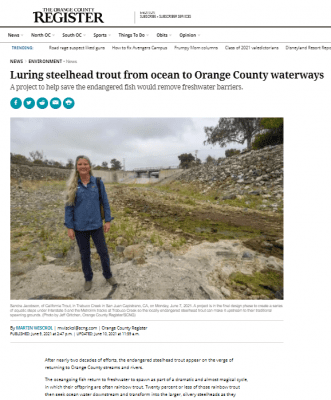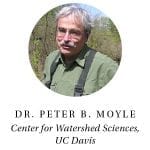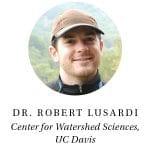CalTrout’s South Coast efforts to revitalize the endangered Southern steelhead population recently reached a milestone. The project involves removing barriers to fish passage at the Metrolink railroad bridge and the I-5 bridge array on Trabuco Creek; the barrier location is in the heart of San Juan Capistrano in Orange County, on the Trabuco tributary to San Juan Creek. Remediation of these barriers will restore access to over 15 miles of steelhead spawning and rearing habitat.
We’re proud to report that with the immense help of partners and funders, this complex project has moved into the final design phase, with scaled-down models of the passages tested in laboratories and completion of actual construction expected in three to five years, according to Sandra Jacobson, CalTrout’s South Coast Director.
Kudos is deserved for the project engineers NHC, Mike Love and Association, Gannett Fleming who applied their unique expertise to technical design, and permitting consultant Stillwater Sciences and Trout Unlimited for their roles in shaping the project over the years. Orange County Flood Control District plays a key role in ultimately providing passage through this barrier by approving the permit for construction and O&M.
Progress is certainly being made to recover the iconic Southern steelhead species. The number of steelhead as documented by scientific monitoring is still precariously low, but the projects that remediate the main threats (like this one on I-5) are underway across the South Coast landscape, and there is reasonable expectation that these native fish can coexist with people.
Read more about the barrier removal project in the article, “Luring steelhead trout from ocean to Orange County waterways”, published in the OC Register.






